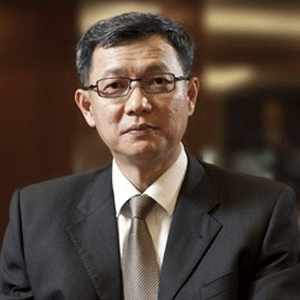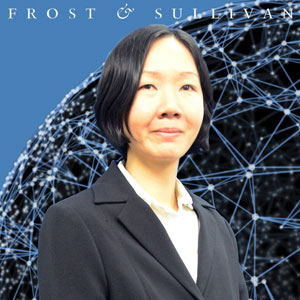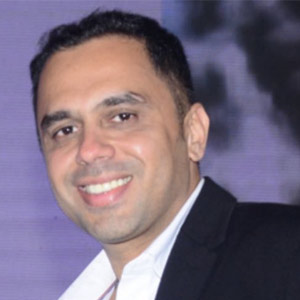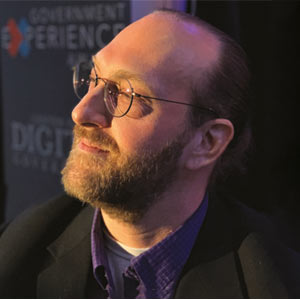THANK YOU FOR SUBSCRIBING

The Evolution of ITs Information to Innovation
Cheah Kok Hoong, and Chief Information Officer,


Cheah Kok Hoong,
It is apparent that the impact of IT (Information Technology) has been immense in terms of realising technological transformation and disruption upon diverse industries available in the market today. As such, I believe this has also strategically altered the roles of CIOs around the world. The “I” has noticeably evolved from “Information” to “Innovation”. IT is seen as the tool or platform that enables businesses and their processes to be more streamlined and automated. As technology continues to evolve into a more dominant partner in support of the vast “Information” that is available anywhere and anytime via ubiquitous mobility and connectivity, “Innovation” gradually becomes the highlight of organisations to transcend traditional boundaries. In line with this change, the IT division has been tasked to assist in business strategies in deliberating potential adoptions such as introducing cutting-edge technologies to not just improve the processes involved, but to also push for new business models, addressing questions like, “What isgoing to be the next big thing?”
The construction division of Sunway Group for instance, one of our corporation’s key business divisions, is very much in the midst of embracing the imminent change of technological advancements. To achieve the desired competitive advantage towards the vision of becoming the leading industry in the region, it is necessary to not just adapt to new technologies, but to prepare ourselves for the next frontier of technological evolution – “Digitalisation”. Not to be mistaken by “Digitisation” that very much involves converting hard copies to digital formats on the screens with added simple analytics, “Digitalisation” is a whole new scope of transformation that brings Innovation to the next level. This journey entails the major shift of utilizing technological domains on Mobility, Cloud, Social, and Big Data coupled with the recent advent of IOT (Internet of Things). The outcome will see new revenue and value-producing opportunities being born in the process of moving to a “Digital Business” such as Google, Facebook and Apple for instance which have differentiated to stay relevant. Nevertheless in contrast, there are noteworthy lessons to be learnt from enterprises that were once really prominent but failed to innovate and think out of the box like Nokia, AT&T or Ford.
For instance, the emergence of Cloud Solutions has been the platform that we are currently actively implementing to enhance aspects of scalability, productivity and security. Utilizing cloud solutions to host our systems and applications has helped us tremendously in reducing costs by centralizing the solutions instead of isolating
Next, moving into an e-Invoicing solution by creating a digital invoice-based ecosystem will further improve the efficiency and effectiveness of payments involved. To add on to the context, technology has not only improved productivity across the corporation, but has also helped reduce wastage at construction sites. This saves companies substantial costs, and at the same time allowing them the opportunity to embrace and promote green practices. This is where the Virtual Design Construction (DC) was established using 3D modelling coupled with integrated logic applications to detect collision and sequence construction phase at zero imaginable error rates.
Another noticeable influence of IT is the emergence of mobile devices that has shifted the way people live their lives. People no longer respond from fixed work stations or are reachable at only specific hours of the day. Mobility as a concept has changed how people wish to stay connected at all times, breaking physical traditional barriers that limit the creativity of what a network truly means. Sensors for IoT devices have augmented the impact even further by changing the way how data is being captured in place of traditional or manual means which are prone to errors and discrepancies. With IoT Sensors, they can be placed in construction machines to gauge how they are behaving and control them remotely. Data captured will also be able to estimate the need for maintenance and perform predictive analysis over the tasks involved from various other heavy machineries simultaneously compiled into the Big Data engine.
For example, a bore pile machine with sensors in place could determine how deep the pile has gone into the ground and the condition of the soil. Such pieces of information are deemed critical in determining the necessary measures and instruments required to adjust the piling works accordingly and effectively. Statistical Data that is captured and stored via Cloud Solutions could also be utilised in performing predictive analysis over the time and resources needed to complete all the construction phases involved. Moreover, wastage has always been an issue in the construction industries due to insufficient and inappropriate estimates performed. Hence, we believe with Big Data and IoT, we could achieve better productivity by only spending adequate resources that prevent unnecessary wastage and save significant costs to the company.
Safety on the other hand, is regarded as the top most priority in construction sites. With Big Data coupled with IoT Sensors, we foresee that they could provide us with a better overview of the processes involved and potential concerns that could possibly occur across the construction sites with minimal man power efforts in monitoring via manual logs or journals. More often than not, these logs are not accurate and lack the ability of explaining what really happened. But with the sensors being placed at strategic areas, these could do a far better job in detecting what is really going on and consolidate them into meaningful form of information that is made readily available in real-time via Cloud solutions and mobile devices where key stakeholders could access them anywhere at any time, empowering them in making not just the right decisions, but timely ones as well.
In addition, we have also realised theimportance for IT in organisations to start embracing the concept of what Gartner has introduced as “Bimodal IT” – two distinct modes of practices with one mode focusing on Stability (Traditional and Sequential) and the other mode on Agility (Exploratory and Innovation). With this approach, it addresses the fundamental and at the same time, the massive change in technology against the existing business processes involved in order to transform businesses to the next level.
Weekly Brief
I agree We use cookies on this website to enhance your user experience. By clicking any link on this page you are giving your consent for us to set cookies. More info
Read Also
Artificial Intelligence - Myths And Truths
Sustainable Future through Innovative Technology Solutions
The Future Relies on Augmented AI
Digitalization with the use of digital technologies/Improving business through digital technologies
How Marco's Pizza Leaned On Technology To Succeed Amid The Pandemic By Quickly Pivoting To Contact-Free Delivery And Curbside Carryout
Bunnings Diy Digital Transformation
For a Smarter City: Trust the Data, Ignore the Hype
Smart Community Innovation for the Post Pandemic





















